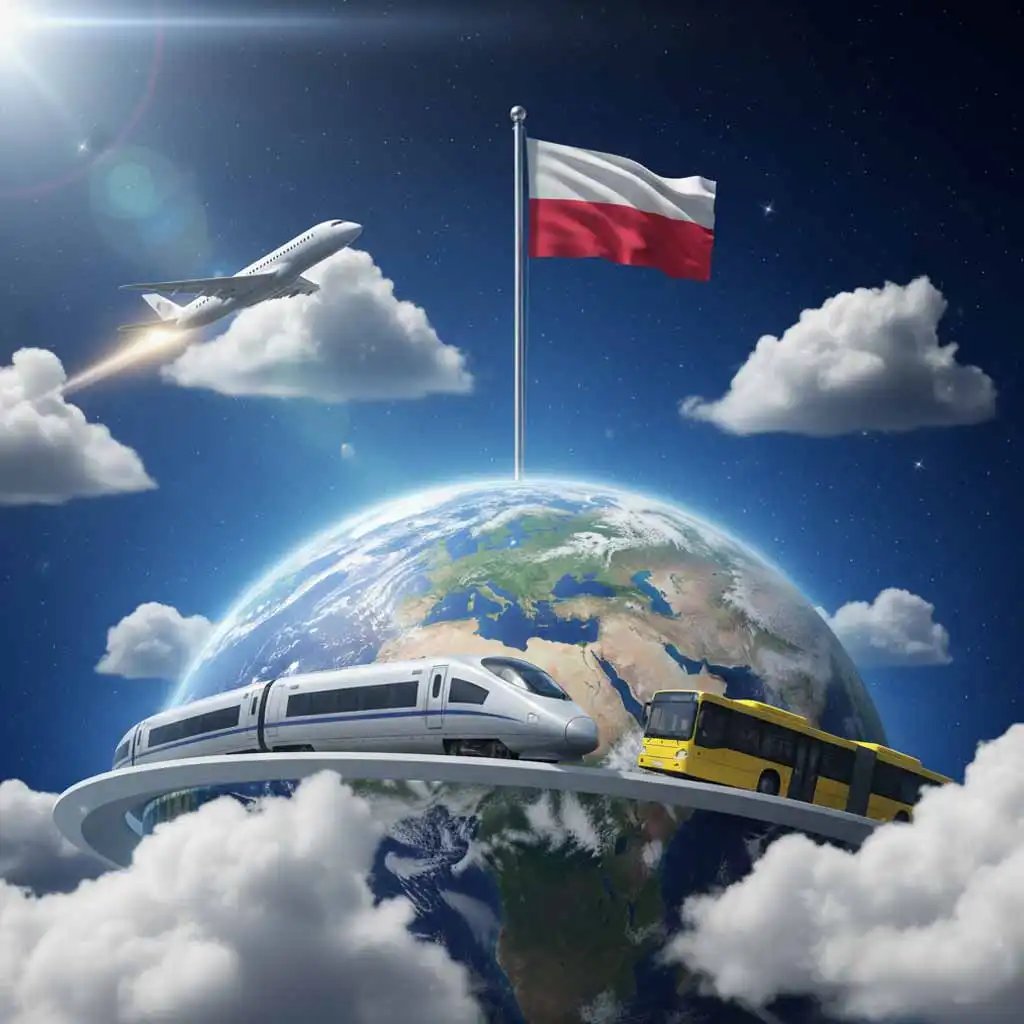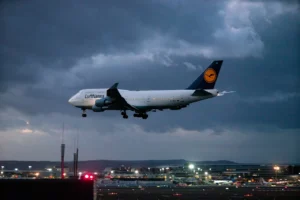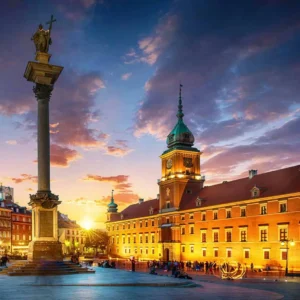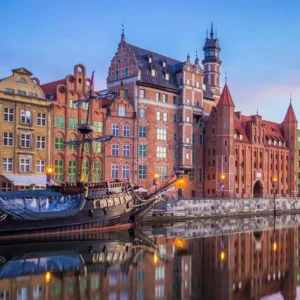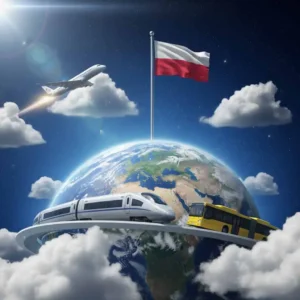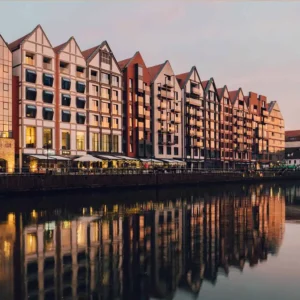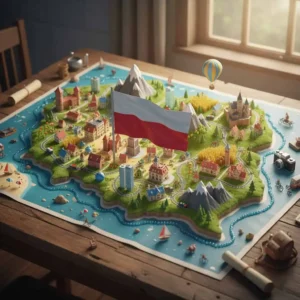Poland, a nation rich in history and culture, is a crossroads of Europe, making it incredibly accessible for travelers from all corners of the globe. Whether you are coming from a neighboring country for a weekend getaway or embarking on a long-haul journey from another continent, a variety of efficient and cost-effective transportation options exist to help you reach this fascinating destination. This comprehensive guide provides you with practical, detailed tips on how to get to Poland, ensuring your journey is as smooth and enjoyable as possible. We will explore the best ways to travel by plane, train, and bus, helping you select the perfect mode of transport to suit your needs, budget, and travel style.
How to Get to Poland: Guide to Flying to Poland
For those traveling from distant locations or simply prioritizing speed and convenience, air travel is the most popular way to get to Poland. The country boasts a well-developed network of international airports that serve as vital hubs for both full-service and low-cost airlines, connecting it to major cities worldwide. Planning your flight wisely can not only save you time but also reduce your travel expenses significantly.
Poland’s Main International Airports and Their Hubs
Poland’s primary airports are strategically located to serve the country’s major urban centers and popular tourist regions. Each airport acts as a gateway, offering unique connections and advantages.
Warsaw Chopin Airport (WAW):
As Poland’s largest and most important air travel hub, Warsaw Chopin Airport is the country’s main international gateway. It is located just a short distance from the city center, offering excellent public transport links. This airport handles the vast majority of international flights, including long-haul routes. It is the home base for LOT Polish Airlines and a major destination for many of Europe’s full-service carriers. Its central location and extensive connections make it a top choice for anyone looking to get to Poland.
Kraków John Paul II International Airport (KRK):
Serving as the primary gateway to southern Poland, Kraków’s airport is a key arrival point for tourists drawn to the historic city and the nearby Tatra Mountains. It is a major hub for low-cost carriers, providing frequent and affordable flights from numerous European cities. Its proximity to Kraków’s city center means you can be exploring the Old Town just a short time after landing.
Gdańsk Lech Wałęsa Airport (GDN):
Located on the Baltic coast, Gdańsk’s airport is essential for travelers visiting the Tricity area (Gdańsk, Sopot, and Gdynia) and northern Poland. It offers a mix of low-cost and traditional airline services, connecting the region to Scandinavia, the UK, and other parts of Europe. This airport is your best bet for exploring the beautiful coastline and the city’s Hanseatic heritage.
Wrocław Nicolaus Copernicus Airport (WRO):
Situated in western Poland, Wrocław’s airport is a significant hub for travelers exploring the Silesian region. It offers good connections, particularly from Germany and the UK, and serves as an important entry point for both business and leisure travelers. Its modern facilities and growing list of routes make it an increasingly popular option.
Katowice International Airport (KTW):
This airport is crucial for the Silesian region, serving the industrial heartland of Poland. It is a major base for low-cost airlines and handles a substantial volume of charter flights, especially during the summer months. Katowice provides a convenient alternative for those wanting to explore cities like Częstochowa or the nearby mountains.
Warsaw Modlin Airport (WMI):
Located further from the city center than Chopin Airport, Warsaw Modlin serves exclusively as a hub for low-cost carriers, primarily Ryanair. This airport is an excellent option for budget-conscious travelers flying into Warsaw from other European cities. While it requires a slightly longer transfer to the capital, the savings on airfare can be substantial.
Other key airports that facilitate travel to Poland include those in Poznań (POZ), Rzeszów (RZE), and Szczecin (SZZ). These smaller airports are nonetheless important, offering connections to specific regions and providing more direct access to local areas, bypassing the larger hubs.
Finding the Best and Cheapest Flights to Poland
Securing an affordable flight to Poland requires a combination of strategic planning and flexibility. By following a few key principles, you can significantly reduce your travel costs.
Booking in Advance: The golden rule of air travel holds especially true for international journeys. Booking your flight several months in advance, typically 2-3 months for international trips and 1-2 months for European flights, is often the most effective way to get to Poland for a lower price. Prices generally increase as the departure date approaches.
Using Flight Comparison Tools: Utilize online flight comparison tools to scan hundreds of airlines at once. Popular platforms such as Google Flights, Skyscanner, and Kayak are invaluable for this purpose. They allow you to compare prices, filter by airline or layover duration, and even track fare changes.
Choosing the Right Airline: The airline you choose has a major impact on your travel experience and cost.
- Low-Cost Carriers: For travelers within Europe, low-cost airlines like Ryanair and Wizz Air are a game-changer. They offer incredibly competitive prices by operating on a no-frills model. Always remember to check their baggage allowance policies and other fees to avoid unexpected costs.
- Full-Service Airlines: If you are flying long-haul from North America, Asia, or another distant region, you will likely fly with a full-service airline. LOT Polish Airlines is Poland’s national carrier and provides direct connections from many international cities. Other major carriers like Lufthansa, KLM, and Air France also offer excellent service and connections.
Insider Tips for Saving Money: Savvy travelers employ several tricks to find the cheapest flights. Consider these strategies to make your travel budget go further.
- Traveling on off-peak days (mid-week).
- Being flexible with travel dates.
- Checking nearby airports for better deals.
- Considering layovers as a way to reduce costs.
Arriving and Navigating from Polish Airports
Once you land in Poland, a network of efficient transportation options will take you from the airport to your final destination. Knowing your options beforehand will make your arrival stress-free.
Airport-to-City Connections:
- Train: Many major airports, including Warsaw Chopin (WAW) and Kraków (KRK), have direct train links to the city center. These trains are often the fastest and most convenient way to travel, bypassing road traffic.
- Bus/Coach: Public bus services are a staple of airport transfers in Poland. Buses are an excellent, low-cost option.
- Taxi and Ride-Sharing: Taxis are readily available at all Polish airports. Be sure to use a licensed taxi from the official rank to avoid scams. Ride-sharing apps like Bolt and Uber are also widely used and often provide a more transparent and competitive pricing structure.
Tips for a Smooth Arrival:
- What to do upon arrival (immigration, baggage claim).
- Currency exchange and ATM use at the airport.
- Basic phrases for interacting with airport staff.
How to Get to Poland by Train: The Scenic and Sustainable Choice
For many Europeans, a journey to Poland by train is a fantastic alternative to flying. It is not only more environmentally friendly but also offers a chance to relax and enjoy the changing landscape. Poland’s railway network is well-integrated with the European system, providing comfortable and efficient connections.
Major International Train Routes to Poland
You can get to Poland from many parts of Europe via a variety of convenient train routes.
- From Western Europe: The most popular routes originate in Germany. Direct EuroCity (EC) trains run daily from Berlin to Warsaw and Poznań. From there, you can easily connect to other Polish cities.
- From the Czech Republic, Austria, and Hungary: There are several direct train services connecting Central European capitals to Poland. For example, direct trains run from Prague to Warsaw and Kraków, as well as from Vienna and Budapest to the same Polish cities.
- Overnight and High-Speed Services: Night trains, such as the EuroNight (EN) services, provide a comfortable way to travel long distances while you sleep, saving you both time and a night’s accommodation. While Poland has not yet implemented a nationwide high-speed rail network, its Express InterCity Premium (EIP) trains offer fast and modern travel on key domestic routes.
Navigating Poland’s National Rail Network (PKP Intercity)
Once you enter Poland, the national rail network, operated by PKP Intercity, allows you to travel extensively throughout the country. Understanding the different train types is key to planning your internal journey.
Understanding Train Types:
- Express InterCity Premium (EIP): These are the most modern and fastest trains, often referred to as Pendolino trains. They run on the main routes connecting major cities like Warsaw, Kraków, and Gdańsk.
- Express InterCity (EIC): These trains are also fast and comfortable, providing excellent service on key intercity routes.
- InterCity (IC) and Twoje Linie Kolejowe (TLK): These are standard long-distance trains. While they are slower than the EIP and EIC services, they are often a more affordable option and serve a wider range of cities and towns.
Booking Your Train Tickets: You have several options for booking your tickets.
- Online booking via PKP Intercity’s website.
- Using international platforms like Trainline or Omio.
- Booking at the station (mention potential language barriers).
Travel Tips for Train Journeys:
- Seat reservations and why they are important.
- What to expect on board (WiFi, power sockets, dining cars).
- Benefits of a Eurail or Interrail Pass for exploring Poland.
The Main Railway Stations in Poland
- Warszawa Centralna (Warsaw): The main hub for the capital.
- Kraków Główny (Kraków): Located right in the city center, a key arrival point for tourists.
- Poznań Główny (Poznań): A major hub in Western Poland.
- Wrocław Główny (Wrocław): A historically significant and busy station.
How to Get to Poland by Bus: The Budget-Friendly Option
This section targets budget-conscious travelers, backpackers, and those coming from nearby countries.
Key International Bus Companies Serving Poland
- FlixBus: Position this as the most dominant and well-known operator. Discuss its extensive network across Europe.
- Eurolines/Sindbad: Mention these as other significant players in the market.
- RegioJet: Highlight this as an alternative, particularly for routes from the Czech Republic.
The Pros and Cons of Bus Travel to Poland
- Advantages: Cost-effectiveness, wide network of routes, often goes to smaller towns, and can be more direct from certain locations.
- Disadvantages: Longer travel times, less comfort compared to trains/planes, potential for delays.
Tips for a Comfortable Bus Journey
- Booking in advance for the best prices.
- Packing essentials for a long trip (snacks, water, travel pillow).
- Understanding bus station locations, as they can sometimes be outside the city center.
Which Travel Method is Right for You? How to Get to Poland
A summary section to help the user make a decision based on their priorities.
| Feature | Plane | Train | Bus |
|---|---|---|---|
| Speed | Fastest for long distances, but includes airport security and travel time. | Faster than bus for medium distances, especially between major cities. | Slowest travel time, subject to road traffic. |
| Cost | Can be expensive, but low-cost carriers offer competitive prices. | Often more expensive than a bus, but offers various ticket types. | Generally the most budget-friendly option. |
| Comfort & Scenery | Can be crowded; limited views during flight. | Very comfortable with space to move around; great for enjoying the scenery. | Less spacious and comfortable than a train; views are good but limited. |
| Convenience | Best for international and long-distance travel. | Excellent for intra-European travel between city centers. | Wide network of routes, often goes to smaller towns. |
Poland Travel Documentation & Visa Requirements
Planning a trip to Poland requires understanding the necessary travel documents and visa requirements. As a member of the European Union (EU) and the Schengen Area, Poland’s regulations are aligned with a broader European framework. This guide provides essential, trustworthy information to help you prepare for your journey, from visa-free travel to the application process for non-Schengen citizens.
Visa-Free Travel and the Schengen Area
Poland is a key member of the Schengen Area, a group of 27 European countries that have abolished internal border controls. This means that once you enter one Schengen country, you can travel freely between the others without repeated passport checks.
For many nationalities, including citizens of the United States, Canada, the United Kingdom, and Australia, Poland is a visa-free destination for short stays.
This visa-free status permits tourism, business, and other short-term visits for up to 90 days within any 180-day period across the entire Schengen Area. It’s crucial to remember that this is a collective limit, and all your time spent in any Schengen country counts toward the 90-day total.
Visa Requirements for Non-Schengen Citizens
If your country isn’t on the visa-free list, you’ll need to apply for a visa to enter Poland. The most common visa types for short-term travel are:
- Schengen Visa (Type C): This is for stays of up to 90 days within a 180-day period. It’s suitable for tourism, family visits, or short business trips.
- National Visa (Type D): This is for longer stays in Poland, exceeding 90 days but not longer than one year, for purposes like work or study.
The visa application process typically involves submitting a completed application form, a valid passport, a recent photo, proof of accommodation, travel medical insurance with a minimum coverage of €30,000, and evidence of sufficient financial means. It’s always best to apply at the Polish embassy or consulate in your country of residence.
⚠️ Disclaimer: For the most current and detailed information, including a specific list of required documents for your nationality, always check the official Polish Ministry of Foreign Affairs website before you travel.
Best Time to Book and Travel
Booking your travel in advance is usually best for prices. The best time to travel to Poland depends on your interests, with summer being popular and the shoulder seasons offering fewer crowds. The off-season (November-March) can lead to significant savings.
Essential Apps and Websites for Travel in Poland
- Jakdojade: For navigating public transport in cities.
- PKP Intercity: The official app for booking train tickets.
- Bolt/Uber: For convenient ride-sharing.
- Google Maps/Apple Maps: For general navigation.
- Google Translate: For translating phrases and signs.
A Few Important Polish Phrases for Travelers
- Dzień dobry (Good day)
- Dziękuję (Thank you)
- Przepraszam (Excuse me)
- Proszę (Please)
- Cześć (Hi/Bye)
Getting Around Upon Arrival
Upon arriving, you will find well-marked signs for local transportation like buses and trains. Remember to validate your ticket as soon as you board.
How to Get to Poland Conclusion
Getting to Poland is an accessible and straightforward process, thanks to its well-developed network of air, rail, and road connections. Whether you choose the speed and convenience of air travel, the relaxed pace and scenic beauty of a train journey, or the budget-friendly option of a bus, each mode of transport offers a unique way to begin your adventure. Poland’s position as a major European hub means you will have a multitude of choices, ensuring you can tailor your travel plans to suit your exact needs.
With this guide, you now have the tools and knowledge to plan your journey with confidence, from choosing the right transport method to understanding essential travel documents and local logistics. Poland awaits, ready to welcome you with its vibrant culture, stunning landscapes, and unforgettable experiences. Happy travels!
Back to the Polish Adventure!
Your journey is just beginning. Now that you’ve explored the secrets of this article, it’s time to return to your home base. Click the link below to dive back into our comprehensive Best Tips for Poland hub article, where you can find more incredible guides and keep planning your ultimate Polish adventure. We’ve got so much more to show you!
Frequently Asked Questions (FAQ)
What is the currency in Poland?
The currency of Poland is the Polish złoty, abbreviated as PLN. While Poland is a member of the European Union, it has not adopted the euro. It’s a good idea to have some złoty on hand for smaller purchases.
Is it safe to travel in Poland?
Poland is considered a very safe country for tourists. However, as with any major travel destination, it’s wise to be aware of your surroundings, especially in crowded tourist areas and on public transportation, to avoid petty theft.
What language do they speak in Poland?
The official language is Polish. While many people, especially those in the hospitality industry and younger generations, speak English, learning a few basic Polish phrases can be very helpful and is appreciated by locals.
What is the best time of year to visit Poland?
The best time to visit Poland is typically from May to September. The weather is warm and pleasant, and there are many outdoor festivals and events. The shoulder seasons (spring and fall) offer beautiful scenery and fewer crowds. Winter can be a great time for those interested in skiing or Christmas markets.
What is the electrical outlet type in Poland?
Poland uses type C and E electrical outlets, which are the standard European two-pin plugs. The standard voltage is 230V and the frequency is 50Hz. If you are traveling from North America or another region with a different standard, you will need a travel adapter and a voltage converter for any devices that are not dual-voltage.
Can I use my credit card everywhere?
Credit and debit cards are widely accepted in Poland, particularly in cities, hotels, restaurants, and larger stores. However, it’s a good idea to carry some cash (złoty) for small purchases at local markets, small shops, or in rural areas.
How does public transportation work in Polish cities?
Public transportation in Polish cities is excellent and includes trams, buses, and metro systems (in Warsaw). Tickets can often be purchased from ticket machines at bus stops, inside vehicles, or at kiosks. Remember to validate your ticket immediately after boarding.
What are some of the must-see attractions?
Poland has a wealth of attractions. Some must-see places include the historic Old Towns of Kraków, Warsaw, and Gdańsk, the beautiful Tatra Mountains, the solemn Auschwitz-Birkenau Memorial and Museum, and the medieval Malbork Castle.
What is a pierogi?
Pierogi are a traditional Polish dish similar to dumplings, with a variety of fillings. They can be savory (with meat, potatoes, or cheese) or sweet (with fruits like blueberries or cherries). They are a must-try culinary experience when visiting Poland.
Is Poland a good destination for a family vacation?
Yes, Poland is a fantastic destination for families. It offers a wide range of activities, from historical attractions and interactive museums to beautiful parks and outdoor adventures. Many cities are very family-friendly with plenty of playgrounds and kid-oriented activities.
